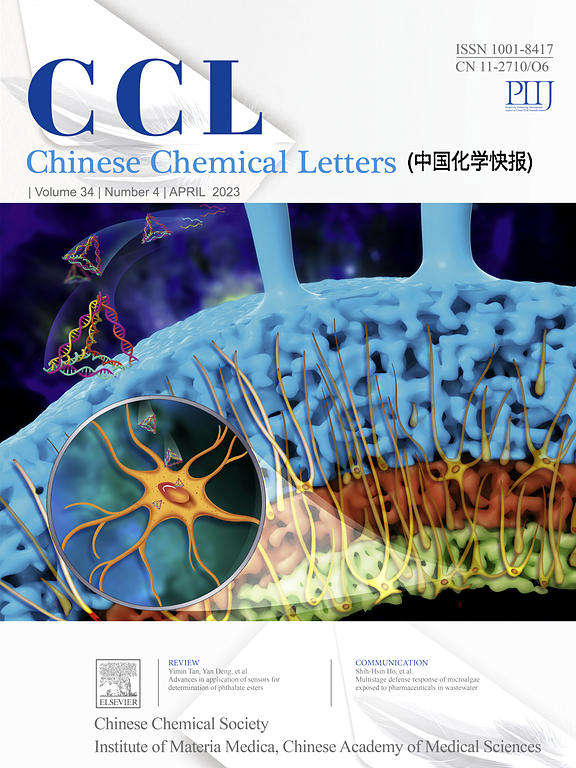Band structure engineering of phosphorus doped Ta3N5 for efficient photoelectrochemical water oxidation
IF 8.9
1区 化学
Q1 CHEMISTRY, MULTIDISCIPLINARY
引用次数: 0
Abstract
Constrained by severe bulk charge recombination, the actual photocurrent density of tantalum nitride (Ta3N5) photoanode is much lower than the theoretical maximum value. Herein, we report the doping of phosphorus, a non-metallic element distinct from oxygen, into Ta3N5, resulting in a photocurrent density 9 times higher than that of pristine Ta3N5. Systematic characterization reveals that the phosphorus doping simultaneously enhances the bulk charge separation efficiency and surface charge injection efficiency of Ta3N5, and induces favorable band energy restructuring. Specifically, a type-II homojunction formed between phosphorus-doped near-surface region and bulk Ta3N5 effectively promotes the separation and transfer of photogenerated holes and electrons. Further modification with a NiFe-based cocatalyst enables the optimized photoanode to deliver a photocurrent density of 10 mA/cm2 at 1.23 V versus the reversible hydrogen electrode (RHE) and an applied bias photo-to-current efficiency of 1.78 % at 0.95 V versus RHE. Our work provides a foundation for the development of a broader range of non-metal doped semiconductors.

磷掺杂Ta3N5高效光电化学水氧化带结构工程
受严重体电荷复合的约束,氮化钽(Ta3N5)光阳极的实际光电流密度远低于理论最大值。在此,我们报道了磷(一种不同于氧的非金属元素)掺杂到Ta3N5中,导致光电流密度比原始Ta3N5高9倍。系统表征表明,磷的掺杂同时提高了Ta3N5的体电荷分离效率和表面电荷注入效率,并诱导了良好的能带重组。具体来说,掺磷的近表面区域与体Ta3N5之间形成了ii型同质结,有效地促进了光生空穴和电子的分离和转移。使用基于nfe的助催化剂进一步修饰,优化后的光阳极在1.23 V时的光电流密度为10 mA/cm2,相对于可逆氢电极(RHE),在0.95 V时的应用偏压光电流效率为1.78 %。我们的工作为开发更广泛的非金属掺杂半导体提供了基础。
本文章由计算机程序翻译,如有差异,请以英文原文为准。
求助全文
约1分钟内获得全文
求助全文
来源期刊

Chinese Chemical Letters
化学-化学综合
CiteScore
14.10
自引率
15.40%
发文量
8969
审稿时长
1.6 months
期刊介绍:
Chinese Chemical Letters (CCL) (ISSN 1001-8417) was founded in July 1990. The journal publishes preliminary accounts in the whole field of chemistry, including inorganic chemistry, organic chemistry, analytical chemistry, physical chemistry, polymer chemistry, applied chemistry, etc.Chinese Chemical Letters does not accept articles previously published or scheduled to be published. To verify originality, your article may be checked by the originality detection service CrossCheck.
 求助内容:
求助内容: 应助结果提醒方式:
应助结果提醒方式:


